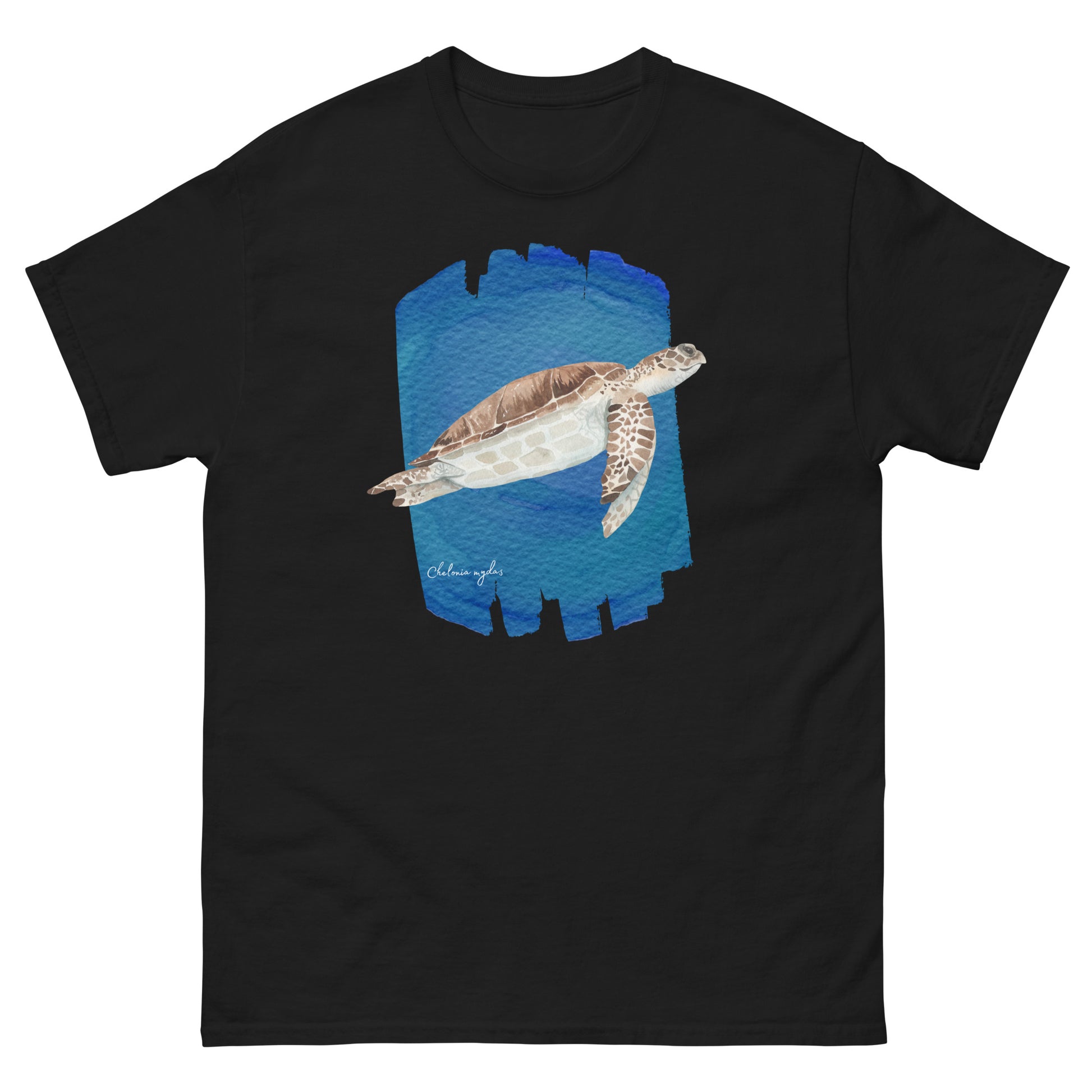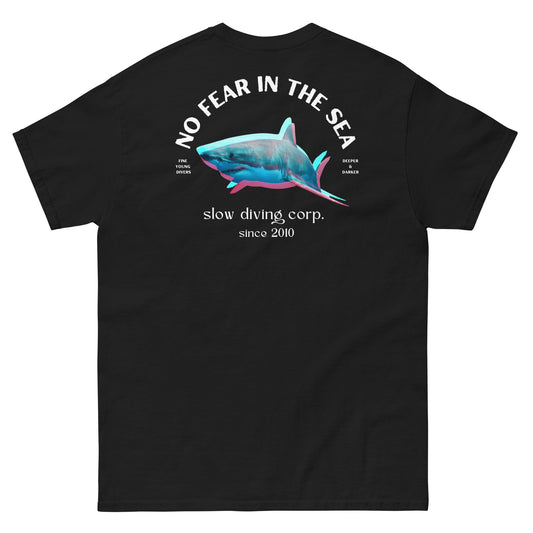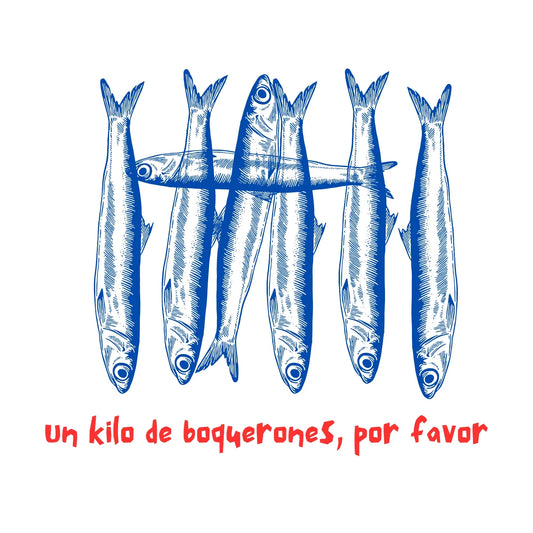The loggerhead sea turtle (Caretta caretta), also known as the loggerhead turtle, is a pelagic sea turtle found in the world's oceans. The loggerhead turtle is about 90 cm long (although specimens over 2.5 m have been found) and is the largest after the leatherback turtle, with an average weight of 135 kg.
Morfology of loggerhead sea turtle
The skin color of the loggerhead varies from yellow to brown, and the carapace is usually reddish brown. There are no external sex differences until the animal becomes an adult, the most obvious difference being that adult males have thicker and shorter tails. The carapace is made up of bony plates that protect the body with five dorsal plates and 12 to 13 marginal plates. Their plastron (or ventral area) has 3 pairs of inframarginal plates. A curious feature of these turtles is that the youngest specimens of loggerhead turtles have 3 ridges on the carapace, which they lose as they mature.
To distinguish loggerheads from other sea turtles, look for their large heads and, in adults, the parasites and algae that live on their shells. More than 100 species of animals and 37 species of algae are known to travel the world's oceans on the backs of loggerheads.
T-shirts and Hoodies for Turtle Lovers
SEE MORE TURTLE T-SHIRTS AND HOODIES
Habitat
Loggerhead turtles are found in the Atlantic, Pacific and Indian Oceans, as well as the Mediterranean Sea. Males spend their entire lives in the ocean, in coastal and shallow waters, and females come ashore briefly only to lay their eggs. After hatching, loggerhead turtles head out to sea, where they live on floating mats of seaweed.

Loggerheads can spend up to 85% of their time underwater, with males being more active divers than females. The average dive duration is 15 to 30 minutes, but they can remain submerged for up to four hours, and even during the coldest months of the year, they can be submerged for up to seven hours, surfacing for only seven minutes to breathe.
Loggerhead turtle reproduction
Loggerheads have a low reproductive rate, with females laying four clutches before going into reproductive hibernation two to three years later. Loggerheads reach sexual maturity between 17 and 33 years of age and live to a maximum of 67 years.
Florida is the most popular nesting site in the world, with more than 67,000 nests built each year. There are also many loggerhead nesting sites in the Indian Ocean along the African coast.

Female loggerhead sea turtle returning to the sea after nesting in Virginia Beach, USA. Image by USFWS
There is evidence of nesting migrations of 14,500 km. The Mediterranean is a nursery for juveniles and a common location for adults during the spring and summer months. Nearly 45% of the Mediterranean juvenile population has migrated from the Atlantic. Greece is the most popular nesting site in the Mediterranean with over 3,000 nests per year.
After incubating for about 80 days, the hatchlings dig to the surface, usually at night when darkness increases the chance of escaping predation and years of extreme surface sand temperatures are reduced. The hatchlings enter the ocean and are guided by the glow of the horizon created by the reflection of the moon and stars on the surface of the water.
Hatchlings can lose up to 20% of their body mass through water evaporation on their journey from the nest to the ocean. Once in the ocean, they swim for about 20 hours to avoid coastal hazards.
Loggerhead sea turtle feeding
Loggerheads are omnivorous, although they feed primarily on benthic invertebrates such as snails, bivalves, and decapods, making them the most diverse sea turtle in terms of diet: Sponges, corals, sea feathers, polychaete worms, sea anemones, barnacles, cephalopods, brachiopods, isopods and even insects, sea urchins, sea cucumbers, starfish and fish (eggs, juveniles and adults) are part of their diet. During open sea migrations, they may also feed on jellyfish, floating mollusks, squid, and flying fish.
Loggerhead turtle threats
Like many other turtles, they have numerous predators, especially on their eggs and after hatching. As adults, only larger sharks such as bull or tiger sharks are able to hunt them, along with mammals such as killer whales and even seals.
The loggerhead turtle is considered an endangered species. Its main threats are suffocation from drift and trawl nets, the disappearance of nesting beaches, and the introduction of exotic predators.
Their eggs are eaten by beetles, ants, crabs, snakes, birds and humans. During their migration from the nest to the sea, the hatchlings are also preyed upon by crabs, toads, snakes, and a variety of seabirds. Once in the ocean, predators of loggerhead hatchlings include parrotfish, moray eels and crabs.

After hatching, loggerhead sea turtle hatchlings quickly make their way to the ocean. Image by USFWS
Loggerhead turtles have not historically been a highly prized species among humans for their meat or eggs, although they have been consumed, but less than other species. In Mexico, turtle eggs are a common food and are considered an aphrodisiac.
Another major threat to these turtles is plastic. Considering that approximately 24,000 tons of plastic are dumped into the ocean each year and the omnivorous nature of this turtle species, it is common to find plastic debris such as bags, sheets, balloons or abandoned fishing lines in many Loggerhead carcasses.
























